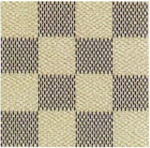One of the main features of the EU trademark system is its unitary effect.
Much has been written about its different aspects, both at the level of genuine use [Judgment of the Court of Justice - ECJ - of 19 December 2012, Case C-149/11 - Leno Merken], reputation ( Judgment of the Court of Justice of 6 October 2009, Case C-301/07 - PAGO International, Judgment of the Court of Justice of 3 September 2015, Case C-125/14 - Iron & Smith), coexistence on the market ( Judgment of the Court of Justice of 20 July 2017, Case C-93/16 - Ornua) or infringement ( Judgment of the Court of Justice of 22 September 2016, Case C-223/15 - combit Software).
Out of the whole bunch of relevant aspects of the said unitary effect, this post is focused on distinctiveness.
For a trademark to be registrable as an EU trademark it must be distinctive throughout the territory of the Union. However, a sign that was not initially distinctive may end up being so if it acquires such distinctiveness through its use (secondary meaning).
This possibility has been causing plenty of headaches for stakeholders, particularly because of the volume and type of evidence required to prove the aforesaid secondary meaning throughout the EU (see, for example, the judgment of the General Court - GCEU - of 19 June 2019, Case T-307/17 - adidas/EUIPO - Shoe Branding Europe, which confirmed the invalidity of the German multinational´s trade mark consisting of three parallel stripes since it had not been proved to be distinctive within the EU).
In this context, the ECJ has already set certain assessment criteria. In particular, in its judgment of 16 September 2015, Case C-215/14 - Société des Produits Nestlé (on the validity of a registration for the shape of the famous KIT KAT chocolate bar), it concluded that, although it is not necessary to adduce evidence to prove distinctiveness, in respect of each Member State individually, such evidence must 'show that acquisition in all the Member States of the Union in which that mark was devoid of any inherent distinctive character'.
In order to prove the acquisition of such a distinctive character, one might think that use on the internet would be a useful and appropriate manner. However, as we explain, that construction has not been validated, initially, at all instances.
It is in this context the GCEU, in its recent decision in Case T-105/19 Louis Vuitton Malletier v EU - Wisniewski, has had to confirm the relevance that online uses and presence may have as well as the need to carry out an overall assessment of all the evidences in order to determine the existence of secondary meaning.
In the case at issue, it was disputed whether the trademark reproduced below was valid, as an EU mark, for various products in Class 18.

In particular, the debate focused on whether that mark was devoid of any distinctive character, or sensu contrario whether it had acquired such character by virtue of the intensive made of it on the market by its proprietor.
The EU Intellectual Property Office (EUIPO) itself had already established, both on the first instance and on appeal, that the disputed mark was invalid because it was not distinctive.
Moreover, in previous decisions, Cases T 359/12 and T 360/12 concerning the registration of

Said background pointed to the possibility that the decision of the GCEU could follow what had been concluded previously. However, in this case the Luxembourg Court revoked the EUIPO decisions.
In essence, the Board of Appeal of the European Office divided the evidence provided into different groups, depending on the country to which they referred. After doing so, it first analysed the evidence related to the so called Group 3 (Bulgaria, Estonia, Latvia, Lithuania, Malta, Slovenia and Slovakia), states where the owner does not have a physical shop (so a large part of the evidence was related to the presence of the challenged trademark on the internet).
The GCEU considered that when carrying out the corresponding assessment and concluding that distinctiveness in relation to those Group 3 countries, and therefore in the EU, would not have been proven, the Office did not take into account a whole series of documents related to the aforementioned online presence.
In the opinion of the Court in doing so, the EUIPO acted incorrectly and vitiated the analysis carried out, analysis which in any case should be global and therefore take into account all relevant material (including that referring to the brand's online presence).
In the light of the foregoing, as commented above, the Court annulled the decision of the EUIPO´s Board of Appeal.
It is now up to the Office to duly analyse all the evidence provided, including that relating to the online use, and to decide whether it is sufficient for the purpose of confirming the secondary meaning.
